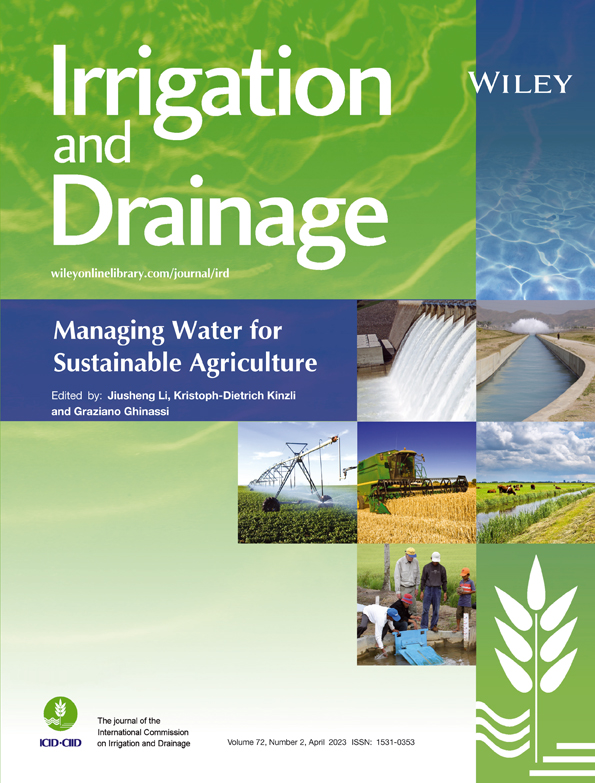Modelling the spray range of rotating nozzles based on modified ballistic trajectory equation parameters
Article title in French: Modelisation de la portee de pulverisation des buses rotatives basee sur les parametres de l'equation de trajectoire balistique modifiee.
Abstract
enThe nozzle spray range is an important parameter in the design of sprinkler systems because it affects the wetted area and water application rate. In this study, the jet deformation parameter kjet, which can measure the mass and shape of the jet microelement, was investigated, and a spray range prediction model for a rotating nozzle was established based on the modified ballistic trajectory equation. A comparison verified the accuracy of the model, and the degree of influence of different factors on the spray range was analysed. The results showed the following: (1) The dimension of the jet deformation parameter kjet is the length L, which is a function of the nozzle diameter, working pressure and nozzle elevation angle. (2) The maximum mean absolute error and root mean square error of the current model at a nozzle elevation angle of 24° were 2.038 and 1.603, respectively, representing a maximum increase in prediction accuracy of 87% and 86.7%, respectively, over other models at the same angle. (3) A sensitivity analysis revealed that the factor with the greatest impact on the nozzle spray range was the nozzle diameter, and the smallest was the nozzle mounting height. (4) The maximum nozzle spray range was positively related to the nozzle diameter and working pressure, and the nozzle elevation angle varied at approximately 30° when the maximum range was reached. This study provides a reference for the design of sprinkler systems and the development of rotating nozzles.
Résumé
frLa portée de pulvérisation de la buse est un paramètre important dans la conception des systèmes d'arrosage car elle affecte la surface mouillée et le taux d'application de l'eau. Dans cette étude, le paramètre de déformation du jet kjet, qui peut mesurer la masse et la forme du micro-élément du jet, a été étudiée, et un modèle de prédiction de la portée de pulvérisation du jet pour une buse rotative a été établi sur la base de l'équation de trajectoire balistique modifiée. Une comparaison a permis de vérifier la précision du modèle, et le degré d'influence de différents facteurs sur la portée de pulvérisation a été analysé. Les résultats ont montré ce qui suit. 1) La dimension du paramètre de déformation du jet kjet est la longueur L, qui est fonction du diamètre de la buse, de la pression de travail et de l'angle d'élévation de la buse. 2) L'erreur moyenne absolue maximale et l'erreur moyenne quadratique maximale du modèle actuel à un angle d'élévation de la buse de 24° étaient respectivement de 2,038 et 1,603, ce qui représente une augmentation maximale de la précision de prédiction de 87% et 86,7%, respectivement, par rapport aux autres modèles au même angle. 3) Une analyse de sensibilité a révélé que le facteur ayant le plus grand impact sur la portée de pulvérisation de la buse était le diamètre de la buse, et le plus faible était la hauteur de l'installation de la buse. 4) La portée maximale de pulvérisation de la buse est positivement liée au diamètre de la buse et à la pression de travail, et l'angle d'élévation de la buse varie d'environ 30° lorsque la portée maximale est atteinte. Cette étude constitue une référence pour la conception de systèmes d'arrosage et le développement de buses rotatives.
Open Research
DATA AVAILABILITY STATEMENT
None.




